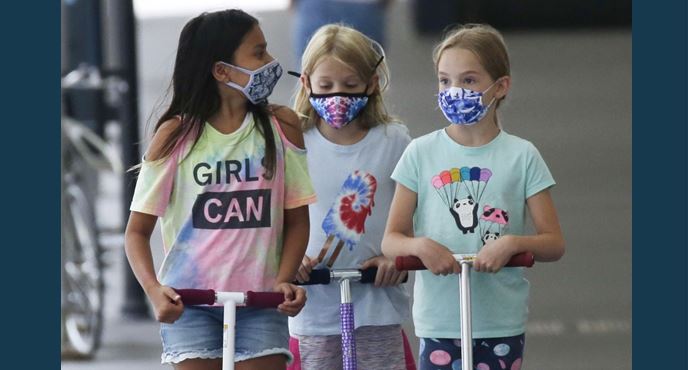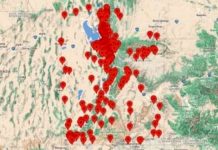May 21 (UPI) — Requiring teachers and staff to wear masks in Georgia elementary schools last fall reduced the number of COVID-19 cases in classrooms by nearly 40%, according to data released Friday by the Centers for Disease Control and Prevention.
Similarly, improvements made to ventilation systems in these facilities cut coronavirus spread by about the same amount, the data showed.
During the nearly month-long study, the 169 kindergarten through fifth grade schools included in the analysis reported a total of 600 cases of COVID-19.
“This study found that before the availability of COVID-19 vaccines, the incidence of COVID-19 was 37% lower in schools that required mask use among teachers and staff members,” the agency researchers wrote.
In addition, case rates were “39% lower in schools that reported implementing one or more strategies to improve classroom ventilation,” they said.
Meanwhile, student COVID-19 programs implemented at Utah high schools from Dec. 1 to March 20 enabled completion of approximately 95% of high school extracurricular competition events and saved an estimated 109,752 in-person instruction days, the agency found in a separate analysis.
After closing their facilities last spring at the start of the pandemic, many school districts across the country opened classrooms for in-person learning in the fall. To do so safely, they instituted a number of measures designed to limit COVID-19 spread, including mask requirements and ventilation improvements.
Examples of ventilation improvements include opening doors and windows and using fans to improve air circulation in classrooms, as well as the installation of high-efficiency particulate absorbing, or HEPA, filters, the CDC said.
Georgia required all schools open for in-person learning to report COVID-19 cases to the state Department of Public Health, according to the agency.
Among participating schools, 65% required masks for teachers and staff members, while 52% did so for students.
More than half the schools implemented improved ventilation strategies, while just under 20% spaced all student desks 6 feet or more apart. Just under 82% also offered flexible medical leave for teachers concerned about their risk for the virus.
Similarly, the state of Utah implemented two programs designed to complete extracurricular activities as scheduled and continue in-person instruction, according to the CDC.
As part of “Test to Play,” which was implemented at 127 of the state’s 193 high schools, student-athletes had to agree to be screened for COVID-19 every 14 days if they wanted to participate in extracurricular activities.
In “Test to Stay,” used at 13 high schools, school-wide testing was performed using rapid tests in order to continue in-person instruction.
Among nearly 60,000 students tested through these programs, just under 1,900 received a positive result, the data showed.
“Utah’s high school COVID-19 testing programs saved in-person instruction days and facilitated continuation of extracurricular activities in accordance with statewide public health policy during a period of high COVID-19 incidence,” the CDC researchers wrote.
“Growing evidence suggests that when schools implement recommended prevention strategies … in-school COVID-19 transmission is infrequent, while loss of in-person instruction can have detrimental effects on children’s education and their social and emotional well-being,” they said.







